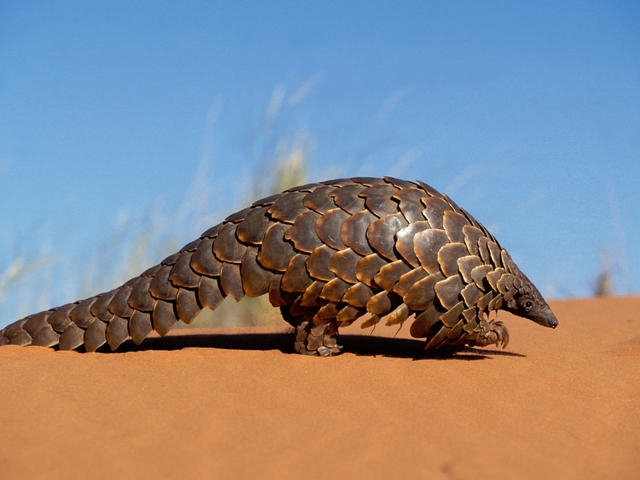COVID-19, animal markets, and environmental security
November 24, 2020

By Marina Malamud
If we ask ourselves what caused the global pandemic affecting our lives today, we would be actually thinking of an applied case of Environmental Security, an emerging field encompassing trends and events affecting the wellbeing of humans. As the Centers for Disease Control and Prevention (CDC) asserts, although the exact source of the current outbreak is still unknown, it has been established that it came from an animal, likely a bat.
Although there is still no evidence to support whether or not the virus was created in a lab, many other deadly diseases began as a forced interaction of wild and domestic species with humans. According to a scientific study released by the National Institutes of Health (NIH), live markets are ideal labs for creating new viruses. Stacked domestic animals are widely exposed to the spread of pathogens. When combined with exotic animals, which often come from remote areas and so are prone to have diseases that humans have not come into contact with, the risk of infection is doubled. The link between COVID-19, wet markets, and wildlife trading (which is oftentimes illegal) is a combined problem of food security, zoonotic diseases, legal and illegal trading of animals, ecosystem depletion, and environmental hazards.
Wildlife trading and wet markets as sources of environmental insecurity

Technically speaking, the novel coronavirus SARS-COV-2 that causes COVID-19 seemed to have jumped from bats to endangered pangolins (scaly anteaters) and to humans at a wildlife market in Wuhan, China. Evidence suggests that the pangolins catch the virus during the process of being transported and traded. In raids, smuggled pangolins were found with bat carcasses, suggesting that they could have been an intermediate host of the infection.
The outbreak of the current pandemic is not an isolated event, it is a trend: 70% of infectious diseases have originated from wild animals in the last decades, according to the BBC. With globalization, zoonoses can migrate with few restrictions and unprecedented speed. This is how community environmental behaviors trigger global consequences. However, none of these issues are new. SARS-COV-2 is just a mutation of the virus that caused the 2003 SARS respiratory disease outbreak in China, that was also linked to open-air markets with wild animals often illegally caught and kept in unhygienic conditions.
The World Economic Forum suggests that the COVID-19 pandemic emerged from an intrusion of human activity into natural ecosystems by deforestation and contact between humans and previously untouched wildlife. This means that the interface between humans and the natural environment impacts not only our ecosystems but our own wellbeing. In that sense, we redirect our vision from a biocentric perspective to a focus on humans as both the main source of environmental insecurity and the victims of the consequences of these actions.
SARS and illicit economies

Apart from the impact on the world’s financial and industrial markets, the social isolation that the new coronavirus imposed in many countries has provoked a significant rise in organized crime activities. Wildlife trafficking, for instance, reportedly generates up to $23 billion in annual revenues. Biodiversity-related crimes are a main source of exploitation, environmental disruption, and animal extinction.
In the wildlife crime market, China drives the trade with demand for animal parts used as exotic meats, horns, and skins, backed by structural corruption. Illicit activities like organized poaching are also on the rise. With millions of people unemployed and the urban to rural migration as a consequence of the pandemic and a reversal of the more traditional rural-to-urban trend, countries like Kenya and Cambodia, among others, have seen an increase in bushmeat poaching exacerbated by park closures and fewer ranger patrols.
According to the Wildlife Justice Commission, organized wildlife crime is now the fourth most profitable illicit economy after the traffic of drugs, humans, and arms. In particular, Southeast Asia is considered the “hot spot” of this phenomenon. More than 100,000 pig-nosed turtles were seized in Indonesia from 2003 to 2019; over 4,500 African rhino horns entered the illegal trade, most destined for Southeast Asian countries; and around 900,000 pangolins are estimated to have been trafficked during the last two decades across Malaysia, Singapore, and Vietnam.
The way ahead
The United States Department of Health & Human Services declared a public health emergency in January 2020, and the State Department requested immediate closure of wildlife wet markets in China, among other measures.
Notwithstanding, what is still lacking, but much needed, is a consolidated political commitment from “Focus Countries” to counteract illegal animal trading and promote conservation efforts. Progress towards a safer ecosystem and improved public health would include a gradual replacement of wet markets, while helping local communities transition to sustainable economic activities that secure their livelihood without the risk of human exposure to deadly pathogens.
In that endeavor, an international interdisciplinary approach to palliate and prevent this tendency of unsustainable exploitation of ecosystems is needed. From different perspectives and forms of engagement, scientific research can meet industry innovation to help societies in the search for new answers. In parallel, civil and military servants can get trained to apply environmental security concerns to planning and policy making processes in the long run.
Ultimately, no matter where we are and what we do, the way we interact with the natural environment is what will define the global destiny of humankind, whether we are conscious of it or not.
For more reflections on the topic of Environmental Security, read recent posts by my Center colleagues, Drs. Villiger and Mortimer.

Dr. Malamud is a Social Science Researcher. As a CLiGS Environmental Security Fellow, she advises on educational programming and partnerships for the new School of Environmental Security, College of Natural Resources and Environment.


